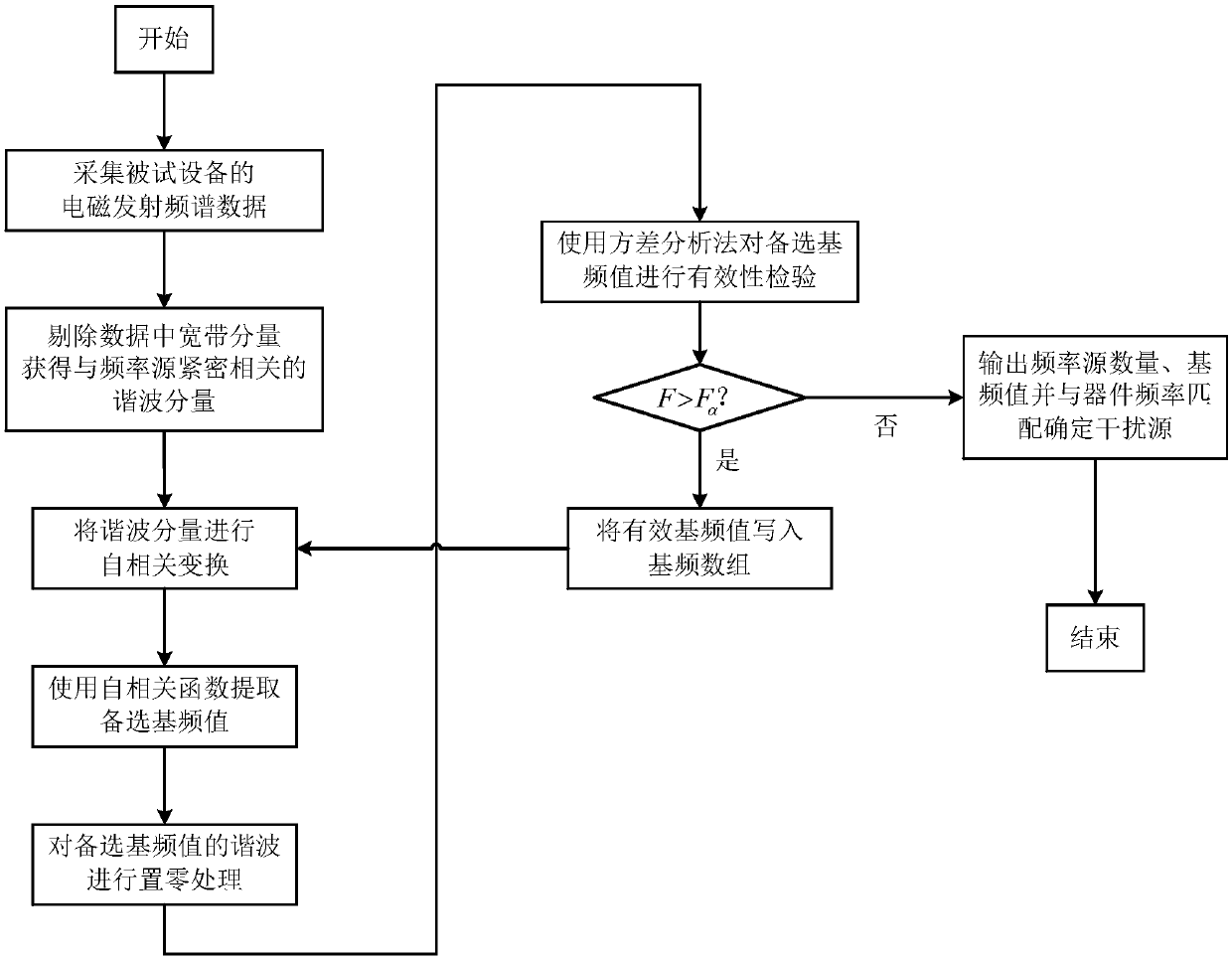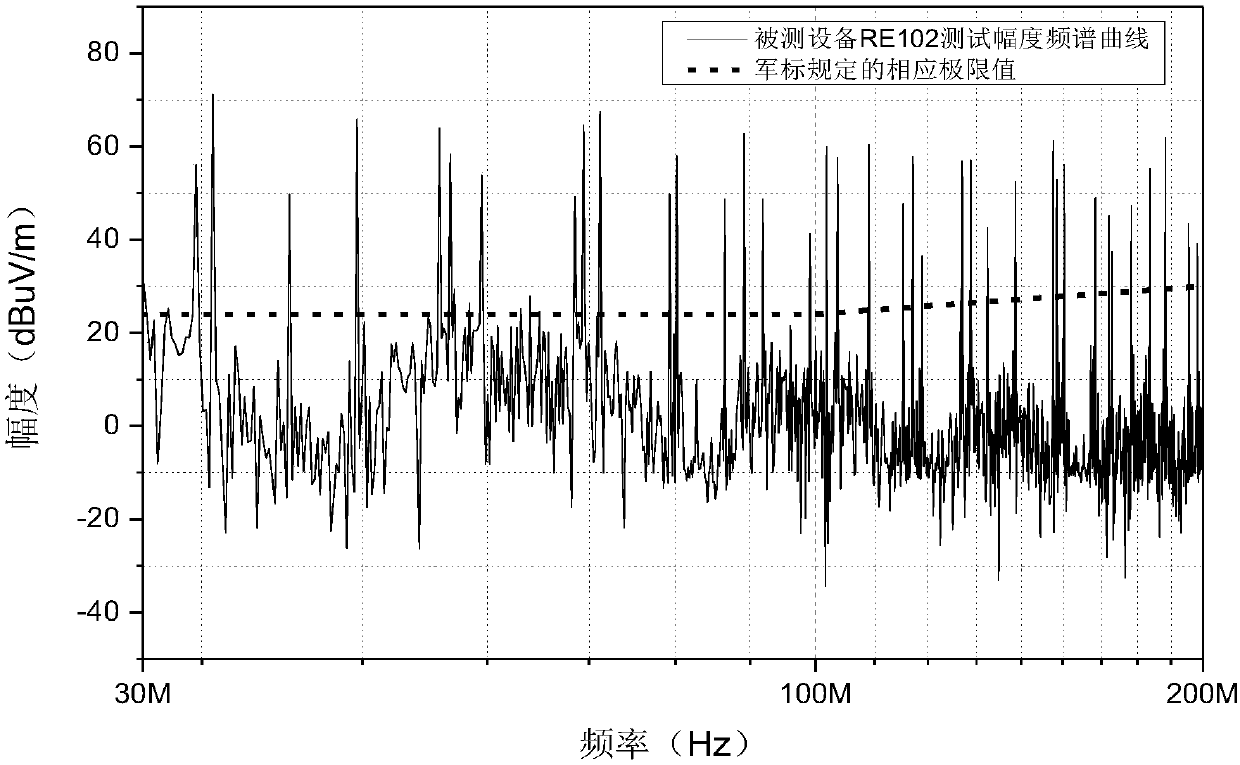A method for extracting frequency source quantity and fundamental frequency value from electromagnetic spectrum
A technology of frequency source and spectrum data, applied in spectrum analysis, measurement of electrical variables, measurement devices, etc., can solve problems such as unexamined
- Summary
- Abstract
- Description
- Claims
- Application Information
AI Technical Summary
Problems solved by technology
Method used
Image
Examples
Embodiment Construction
[0073] The present invention will be further described in detail below with reference to the drawings and examples.
[0074] The typical test configuration is attached figure 1 As shown, electromagnetic interference testing can generally be divided into two types: "conducted emission test" and "radiated emission test". Conducted emission test uses current probe, linear impedance network and measuring receiver as the main instruments. Possible conducted emission signals are measured. The radiation emission test refers to the use of different types of antennas and measurement receivers as the main instruments to measure the radiation emission signals that the equipment may radiate into space. The above-mentioned test process also requires a data recording device (computer), and the measuring receiver is respectively connected with the receiving antenna (or linear impedance network) and the computer in a wired manner.
[0075] In the present invention, the information received by th...
PUM
 Login to View More
Login to View More Abstract
Description
Claims
Application Information
 Login to View More
Login to View More - Generate Ideas
- Intellectual Property
- Life Sciences
- Materials
- Tech Scout
- Unparalleled Data Quality
- Higher Quality Content
- 60% Fewer Hallucinations
Browse by: Latest US Patents, China's latest patents, Technical Efficacy Thesaurus, Application Domain, Technology Topic, Popular Technical Reports.
© 2025 PatSnap. All rights reserved.Legal|Privacy policy|Modern Slavery Act Transparency Statement|Sitemap|About US| Contact US: help@patsnap.com



